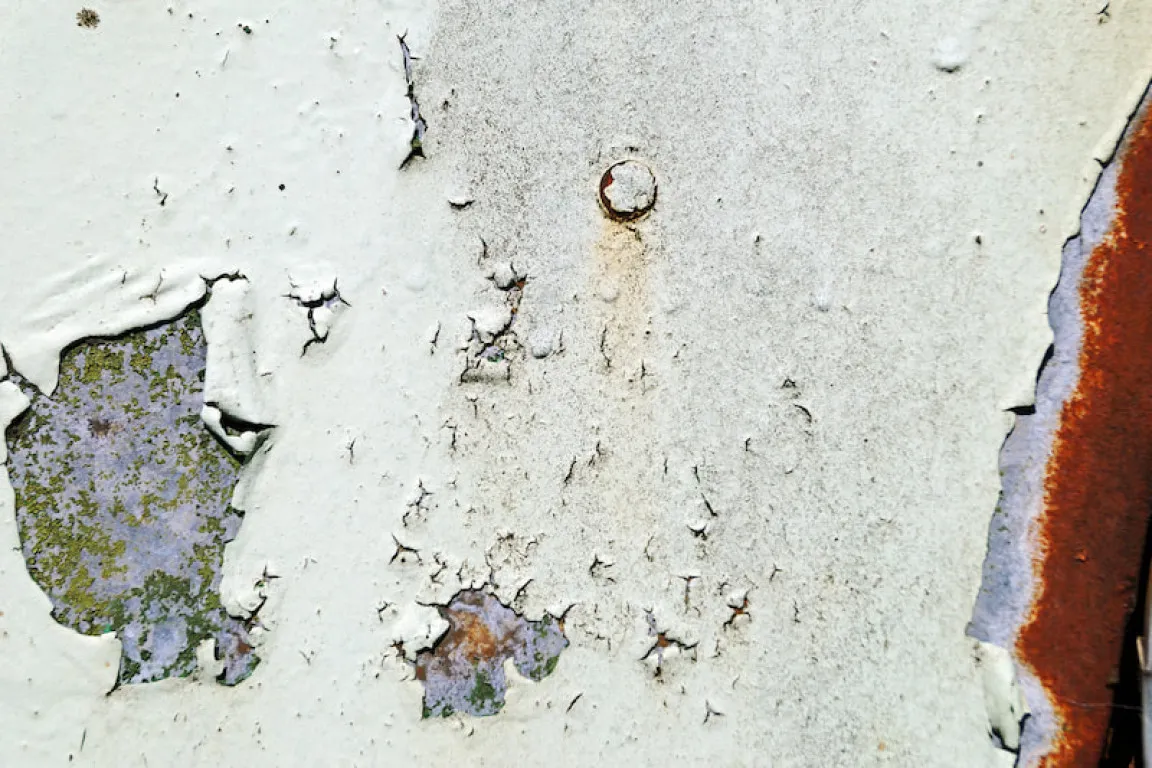Some people might use wall coverings as a quick fix for damp walls. However, this method is not recommended as it will only worsen the condition of the walls and create an ideal environment for mold growth, which can be harmful to the health of the occupants.
Therefore, it is important to know the causes of damp walls and take appropriate steps to address them. This article will discuss the causes and ways to overcome damp walls, from roof renovations to choosing quality building materials. Read on to the end!
Causes of Damp Walls
Before addressing the problem of damp walls, you need to first understand the main causes of the issue. Understanding the underlying factors can help choose effective and appropriate handling methods. Here is a detailed explanation of the causes of damp walls that you need to know.
1. Roof Leaks
Roof leaks are one of the causes of damp walls. Poorly installed or old roofs allow rainwater to seep into the building. This leakage not only disrupts comfort and damages the aesthetics of the walls but also creates an ideal environment for the growth of mold and other microorganisms.
2. Poor Ventilation
Daily activities such as cooking, bathing, and washing produce water vapor, creating humidity in the air. Without adequate ventilation, humid air cannot escape and fresh air cannot enter. When touching cold surfaces like walls or windows, the water vapor will seep into the walls. Besides causing damp walls, this also deteriorates the building structure and triggers mold growth.
3. Soil Moisture
The main causes of this problem are poor drainage around the foundation and damage to underground pipes or water channels. Poor drainage can cause rainwater to pool around the foundation, while high groundwater levels can increase pressure on the foundation, pushing water into the building structure.
This condition can lead to various problems such as brick erosion and swelling or cracking of building materials. Additionally, mold growth due to damp walls can have adverse effects on health.
4. Rainy Weather
Prolonged rain can cause water to pool around the foundation and wall surfaces, especially if the drainage system is not functioning well. Poor drainage allows water to collect near the foundation, increasing the risk of water seeping into the walls. If there are gaps or cracks in the walls or roof, rainwater can enter through these gaps and cause damp walls.
5. Poor Quality Materials
Using substandard building materials may also damp walls. For example, using cement that does not meet standards or is of low quality in the wall construction process poses a higher risk of damp walls.
Poor-quality cement tends to have strong water absorption, making it more prone to absorbing moisture from the air or surrounding soil. As a result, the walls become wet and difficult to dry, leading to mold growth, cracks, and structural damage to the building.
Read also: 5 Tips for Long-Lasting Cement Walls
How to Overcome Damp Walls
After understanding the various causes of damp walls, you can take appropriate steps based on the causes of the damp wall problems. Here are some solutions you can implement.
1. Renovate the Roof
If the roof leak causes damp walls in your home, immediately repair or replace the roof. Check the condition of the tiles and fix any cracks or tears in the roofing material. Ensure that the waterproofing system functions well to minimize the risk of rainwater seeping into the house and thus address the damp wall problem.
2. Install Additional Ventilation
To overcome damp and peeling walls caused by poor ventilation, install additional ventilation in the room. Add ceiling fans or roof vents that help improve indoor air circulation. With additional ventilation, trapped humid air can be expelled and replaced with fresh air from outside.
3. Improve Drainage
If poor drainage causes damp walls, proceed to clean drainage channels from debris and materials that block water flow, repair damaged or obstructed parts, and ensure adequate slope for rainwater to flow away from walls and building foundations.
Also, check rainwater drainage channels, such as downpipes or water drainage channels. Ensure no leaks or damage can cause water to seep back into the soil around the walls. Regularly maintaining drainage channels can minimize water buildup around the walls and address the damp wall problem.
4. Install Canopies and Gutters
Installing canopies and gutters is a step you can take to protect exterior walls from rainwater. A canopy is a protective structure installed above windows, doors, or specific areas of exterior walls to prevent rainwater from seeping into the room or wall.
Meanwhile, gutters are drainage channels installed along the edges of the roof to catch rainwater and direct it away from the walls.
After installing canopies and gutters, rainwater from the roof will be directed to the gutters, and then channeled to the drainage system, ensuring water flows away from the building walls. This will reduce the likelihood of rainwater seeping into the walls and prevent damp walls.
Read also: How to Beautify Cement Walls with Relief
5. Choose Quality Building Materials
Selecting high-quality building materials should be a priority. High-quality materials are more resistant to water and humidity, helping maintain the structural integrity of the building over the long term.
For example, make sure to use only high-quality cement. The reason is that high-quality cement is better at resisting water and preventing seepage, thus protecting walls from moisture damage. High-quality cement also provides a smoother and stronger finish, minimizing the risk of cracks and erosion.
Semen Merah Putih Water Shield could be one of your best options. This cement offers many advantages over ordinary cement as it is specifically designed to protect against water seepage and humidity with its watershield technology. This cement also prevents rust and corrosion on steel reinforcements, is strong and crack-resistant, and provides a smoother wall surface.
That’s an explanation of the causes and ways to overcome damp walls. In conclusion, besides environmental factors, damp walls are generally caused by poor-quality building materials, such as non-waterproof cement. Therefore, it is essential to choose high-quality, waterproof cement to prevent moisture problems on walls.
As a premium cement product, Semen Merah Putih Watershield is one of the best solutions. This cement has high durability against environmental factors that can cause damage. So, don’t hesitate to use Semen Merah Putih Watershield to address your damp wall problems! For more information about our cement, you can fill out the form now!
Read also: 3 Ideas to Beautify Concrete Appearances



